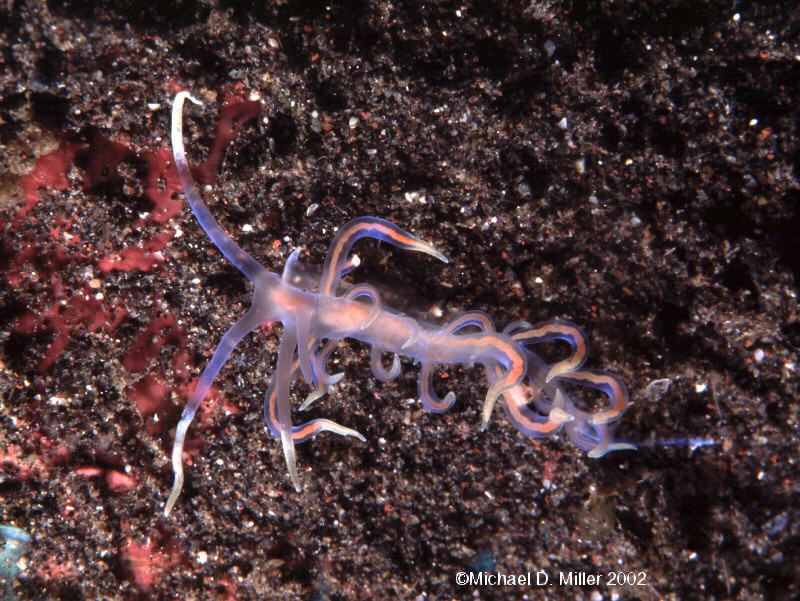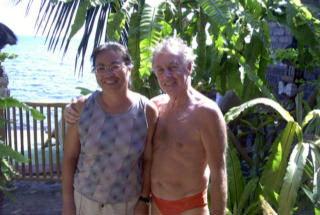 |
Phyllodesmium sp.
Photo courtesy of WebmasterTulamben, Bali, Indonesia
Sept. 2002
Phyllodesmium sp. (Risbec, 1928)
Dave is catching up from last week's DEMA show in Las Vegas so I thought this would be an ideal time to dabble in Opisthobranch taxnomony. This week's subject is somewhat similar to Phyllodesmium poindimiei (Risbec, 1928). Bill Rudman has observed that the lack of secondary branching of the pink digestive glad ducts that run of the cerata may preclude this animal from being P. poindimiei . Similar postings of the what appears to be the same animal have been made on the Sea Slug Forum
Phyllodesmium are one of my favorite Opisthobranchs, it is always a delight to find them. This one was found crawling on the rock sand interface in about 40 ft. of water just off the wreck of the Liberty at Tulamben, Bali. P. sp. was also accompanied by a specimen of Phyllodesmium macphersonae that is known to be "solar powered" according the Sea Slug Forum by incorporating zooxanthellae in its body to produce nutrients for the animal. How amazing indeed!
My dive buddy videophotographer Alan Grant and I set out for Bali in September with great expectations. After a thirty hour trip we were happy to be in the embrace of paradise once again. During an eleven day stay at Dive Paradise at Tulamben we must have photographed over 100 different species of nudibranchs!
Sad to say Bali is a paradise lost for the time being. The bombing of the night clubs in the Kuta Beach area two weeks after we left are going to impact the tourism business for some time to come. Very sad indeed! My dive buddy Alan and I have nothing but fond memories of Bali and hope someday to return when the threat of terrorism has diminished.
Webmaster
San Diego, CA
Nov., 2002
Earlier Bali trip of photo of Emiko and Joseph at Tulamben
 |
Emiko Shibuya is the resident manager at Dive Paradise. Joseph is a native Austrian who spends part of the year in Bali. It is quite an honor to be invited to one of Joseph's underwater outstanding underwater slide shows when he is in residence. Dive Paradise is centrally located for easy access to the various dive spots at Tulamben. Alan and I quickly got into a comfortable routine of two day dives followed by an evening dive.
September and October is said to be the best time to visit Tulamben weatherwise. The rainy season begins in November extending through March. Emiko has told me that April and May are a good time to see the branchs that follow the rains and are not seen in September and October. Wave action can sometimes be a problem during this period so be prepared possible rough entries and exits. As is my custom, I did not take any gratuities to make this endorsement. With the world wide terrorist threat and in particular with recent events in Bali you may not choose to travel at this time. But when you do, I strongly recommend contacting Emiko and make a stay at Tulamben part of your trip itinerary! |
